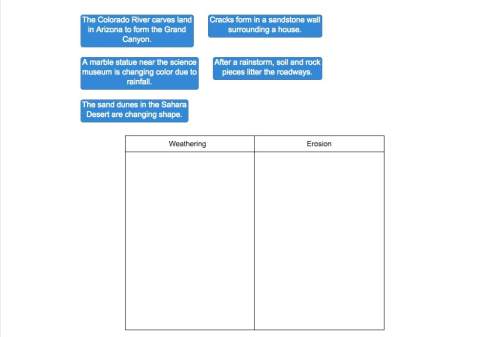
Biology, 25.07.2021 14:00 medinajocelyn45
Put the following steps of DNA replication in order.
Question 1 options:
As a result, one strand (the leading strand) is replicated continuously in the 5´ to 3´ direction in the same direction that the replication fork is moving.
Replication ends with each new molecule of DNA containing one parent strand and one new strand.
Replication begins with a specific nucleotide sequence called the replication origin.
The other strand, known as the lagging strand, is replicated in short segments, still in the 5´ to 3´ direction, but away from the replication fork.
When replication is complete, DNA polymerase dismantles the RNA primer and proofreads the nitrogen base pairing of the two new DNA molecules.
These fragments, called Okazaki fragments, are spliced together by DNA ligase.
New DNA strands are produced when an enzyme called DNA polymerase inserts into the replication bubble. A primase enzyme synthesizes an RNA primer that serves as the starting point of new nucleotide attachment by DNA polymerase
DNA polymerase can only synthesize the new nucleotide chain in the 5´ to 3´ direction.
The helicases cleave and unravel a section of the original double helix, creating Y-shaped areas (replication forks) at the end of the unwound areas, which form a replication bubble.
A group of enzymes, called the helicases, bind to the DNA at each replication origin.

Answers: 3
Another question on Biology

Biology, 21.06.2019 19:50
Which of these resources is used worldwide to make construction products, pottery, and porcelain
Answers: 3

Biology, 21.06.2019 22:00
Flock x flock y flock z total pieces of food eaten (from previous page) 147 93 60 food percentage* % % % simulated number of birds in flock for 3rd generation** * divide each flock's total pieces of food by 300, the total number of pieces of food eaten. ** multiply the food percentage for each flock by the total number of birds (30).
Answers: 1

Biology, 21.06.2019 23:00
The circles, or orbits, for electrons are called energy levels. each level can hold only a certain number of electrons. add electrons to each level until you can't add any more. how many electrons can each level hold?
Answers: 3

Biology, 22.06.2019 00:30
If bacteria are much too small to see, what is one reason why can we see colonies in the petri dishes that have plenty of food to eat after only a few days?
Answers: 1
You know the right answer?
Put the following steps of DNA replication in order.
Question 1 options:
As a result, o...
As a result, o...
Questions



Mathematics, 19.12.2019 11:31


Computers and Technology, 19.12.2019 11:31




History, 19.12.2019 11:31

Mathematics, 19.12.2019 11:31



Mathematics, 19.12.2019 11:31

Mathematics, 19.12.2019 11:31

Advanced Placement (AP), 19.12.2019 11:31


History, 19.12.2019 11:31

History, 19.12.2019 11:31

Mathematics, 19.12.2019 11:31




